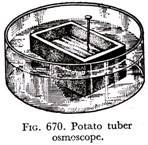In this article we will discuss about the mode of action of antisense RNA.
Several possible mechanisms are involved during antisense inhibition of specific gene. Following are some of the most promising mode of actions have been suggested (Fig. 22.3).
Action in the Nucleus Premise:
One of the earliest methods in antisense inhibition is carried out by blocking transcription. This happens to be within nuclear premise. It was shown that transcribed antisense RNA can have influential role in interfering RNA processing stage. Successful interferences are inflicted by blocking splicing of the mRNA. Thus, unspliced RNA or unprocessed RNA itself is not in a position to move out from nuclear premise and enter for translation process.
Formation of RNA-RNA duplex due to binding of sense and antisense transcript is quite unstable and are susceptible to be attacked by nuclease. Degradation of duplex RNA is then inevitable. In addition, duplex state of RNA hinder the processing or easy transport of sense mRNA across the nuclear membrane.
Action in Cytoplasmic Premise:
RNA-RNA duplex may sometime escape from nuclear premise without being killed by nucleases. Inside the cytoplasm inhibition may also occur at translation stage when antisense transcript would compete with the ribosomes to bind specifically at 5′ end of the sense RNA (mRNA).
Generally, ribosomes are assembled on single-stranded mRNA and initiates translation. But binding of sense and antisense RNA (RNA duplex) completely prevents ribosome assembly on RNA duplex molecule in duplex status or assembled ribosomes cannot move along with duplex RNA. Therefore, completely arrest the translation process.
Binding of antisense RNA to target mRNA at specific sequence play a role in inhibiting translation process. While constructing artificial antisense gene on several occasions, a small fragment containing Shine—Dalgarno sequence for ribosome binding and the coding region will be inserted into expression vector into opposite orientation.
The resulting gene yields antisense RNA that is complementary to the ribosome binding site region of the mRNA. A shorter, antisense RNA lacking most of the sequence complementary to the 5′ leader region of the mRNA was found to be less effective. These results clearly indicated to be importance of 5′ untranslated complementarity and/or the length of the complementary region in antisense RNA activity.
Further support for such evidence comes from the finding that cells engineered to produce antisense RNA complementary to the 5′ region of the tetracycline mRNA than controlled cultures. The extent of antisense RNA length and amino terminal complementarity appear to be correlated with high inhibition levels. Similarly, in the case of CAT antisense RNA, the RNAs complementary to the 5′ end of the target mRNA was more effective.
